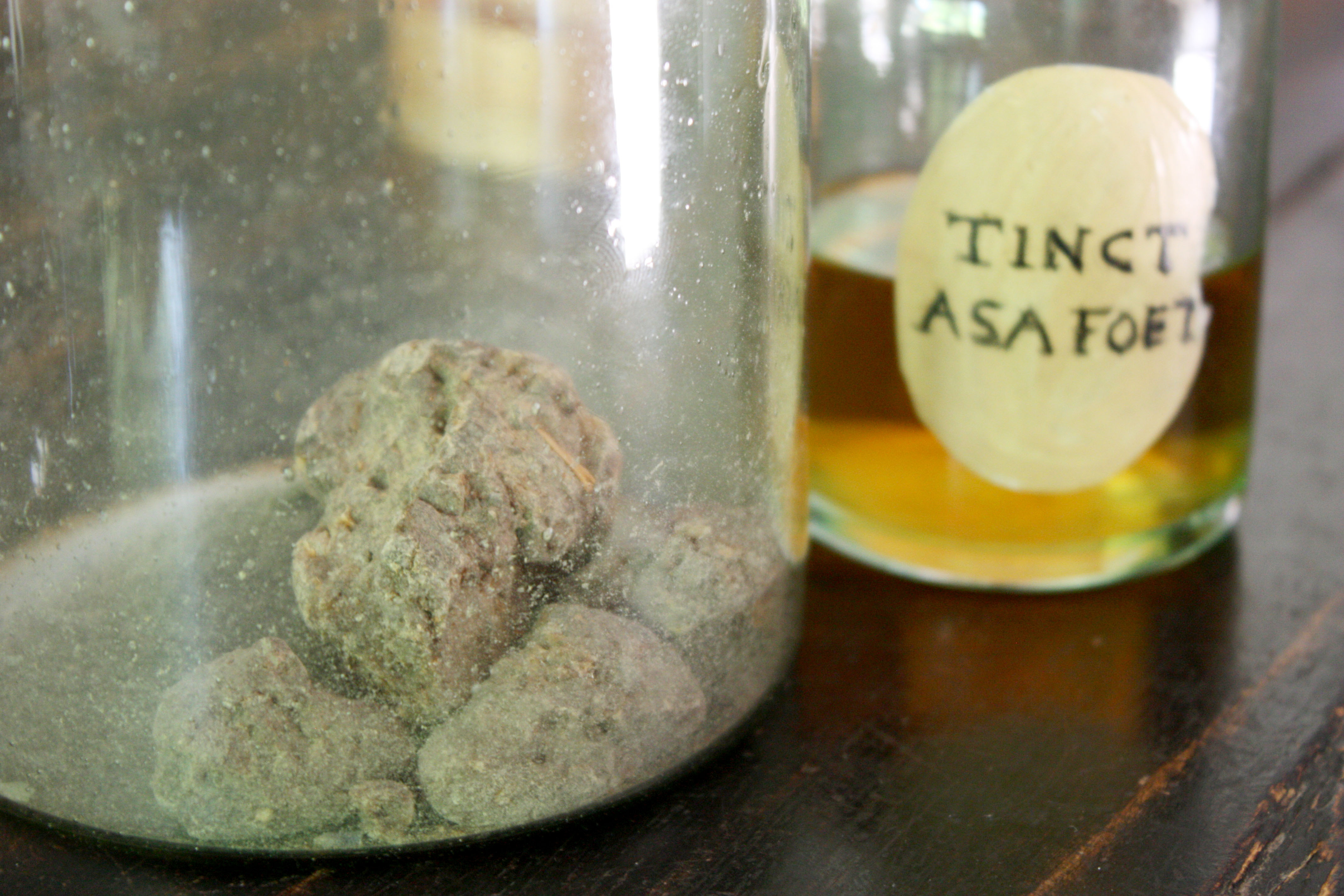|
Silphium (antiquity)
Silphium (also known as ''laserwort'' or ''laser''; Ancient Greek: , ) is an unidentified plant that was used in classical antiquity as a seasoning, perfume, aphrodisiac, and medicine. It was an essential item of trade from the ancient North African city of Cyrene and was so critical to the Cyrenian economy that most of their coins bore an image of the plant. The valuable product was the plant's resin, called in Latin '' laserpicium'', ''lasarpicium'' or ''laser'' (the words '' Laserpitium'' and ''Laser'' were used by botanists to name genera of aromatic plants, but the silphium plant is not believed to belong to these genera). The exact identity of silphium is unclear. It was claimed to have become extinct in Roman times. It is commonly believed to be a relative of giant fennel in the genus '' Ferula''. [...More Info...] [...Related Items...] OR: [Wikipedia] [Google] [Baidu] |
Asafoetida
Asafoetida (; also spelled asafetida) is the dried latex (Natural gum, gum oleoresin) exuded from the rhizome or tap root of several species of ''Ferula'', perennial herbs of the carrot family. It is produced in Iran, Afghanistan, Central Asia, southern India and Northwest China (Xinjiang). Different regions have different botanical sources. Asafoetida has a Pungency, pungent smell, as reflected in its name, lending it the common name of "stinking gum". The odour dissipates upon cooking; in cooked dishes, it delivers a smooth flavour reminiscent of leeks or other onion relatives. Asafoetida is also known colloquially as "devil's dung" in English (and similar expressions in many other languages). Etymology and other names The English language, English name is derived from ''asa'', a Romanization, Latinised form of Persian language, Persian 'mastic (plant resin), mastic', and Latin 'stinky'. Other names include, with its pungent odour having resulted in many unpleasant na ... [...More Info...] [...Related Items...] OR: [Wikipedia] [Google] [Baidu] |
Libya
Libya, officially the State of Libya, is a country in the Maghreb region of North Africa. It borders the Mediterranean Sea to the north, Egypt to Egypt–Libya border, the east, Sudan to Libya–Sudan border, the southeast, Chad to Chad–Libya border, the south, Niger to Libya–Niger border, the southwest, Algeria to Algeria–Libya border, the west, and Tunisia to Libya–Tunisia border, the northwest. With an area of almost , it is the 4th-largest country in Africa and the Arab world, and the List of countries and outlying territories by total area, 16th-largest in the world. Libya claims 32,000 square kilometres of southeastern Algeria, south of the Libyan town of Ghat, Libya, Ghat. The largest city and capital is Tripoli, Libya, Tripoli, which is located in northwestern Libya and contains over a million of Libya's seven million people. Libya has been inhabited by Berber people, Berbers since the late Bronze Age as descendants from Iberomaurusian and Capsian cultures. I ... [...More Info...] [...Related Items...] OR: [Wikipedia] [Google] [Baidu] |
Cyrenaica
Cyrenaica ( ) or Kyrenaika (, , after the city of Cyrene), is the eastern region of Libya. Cyrenaica includes all of the eastern part of Libya between the 16th and 25th meridians east, including the Kufra District. The coastal region, also known as ''Pentapolis'' ("Five Cities") in antiquity, was part of the Roman province of Crete and Cyrenaica, later divided into ''Libya Pentapolis'' and ''Libya Sicca''. During the Islamic period, the area came to be known as ''Barqa'', after the city of Barca. Cyrenaica became an Italian colony in 1911. After the 1934 formation of Italian Libya, the Cyrenaica province was designated as one of the three primary provinces of the country. During World War II, it fell under British military and civil administration from 1943 until 1951, and finally in the Kingdom of Libya from 1951 until 1963. The region that used to be Cyrenaica officially until 1963 has formed several shabiyat, the administrative divisions of Libya, since 1995. ... [...More Info...] [...Related Items...] OR: [Wikipedia] [Google] [Baidu] |
Weighing And Loading Of Silphium At Cyrene
In science and engineering, the weight of an object is a quantity associated with the gravitational force exerted on the object by other objects in its environment, although there is some variation and debate as to the exact definition. Some standard textbooks define weight as a vector quantity, the gravitational force acting on the object. Others define weight as a scalar quantity, the magnitude of the gravitational force. Yet others define it as the magnitude of the reaction force exerted on a body by mechanisms that counteract the effects of gravity: the weight is the quantity that is measured by, for example, a spring scale. Thus, in a state of free fall, the weight would be zero. In this sense of weight, terrestrial objects can be weightless: so if one ignores air resistance, one could say the legendary apple falling from the tree, on its way to meet the ground near Isaac Newton, was weightless. The unit of measurement for weight is that of force, which in the International ... [...More Info...] [...Related Items...] OR: [Wikipedia] [Google] [Baidu] |
Fennel
Fennel (''Foeniculum vulgare'') is a flowering plant species in the carrot family. It is a hardy, perennial herb with yellow flowers and feathery leaves. It is indigenous to the shores of the Mediterranean but has become widely naturalized in many parts of the world, especially on dry soils near the sea coast and on riverbanks. It is a highly flavorful herb used in cooking and, along with the similar-tasting anise, is one of the primary ingredients of absinthe. Florence fennel or finocchio (, , ) is a selection with a swollen, bulb-like stem base (sometimes called ''bulb fennel'') that is used as a vegetable. Description ''Foeniculum vulgare'' is a perennial herb. The stem is hollow, erect, and glaucous green, and it can grow up to tall. The leaves grow up to long; they are finely dissected, with the ultimate segments filiform (threadlike), about wide. Its leaves are similar to those of dill, but thinner. The flowers are produced in terminal compound umbels wid ... [...More Info...] [...Related Items...] OR: [Wikipedia] [Google] [Baidu] |
Cubit
The cubit is an ancient unit of length based on the distance from the elbow to the tip of the middle finger. It was primarily associated with the Sumerians, Egyptians, and Israelites. The term ''cubit'' is found in the Bible regarding Noah's Ark, the Ark of the Covenant, the Tabernacle, and Solomon's Temple. The ''common cubit'' was divided into 6 palm (unit), palms × 4 Finger (unit), fingers = 24 digit (unit), digits. ''Royal cubits'' added a palm for 7 palms × 4 fingers = 28 digits. These lengths typically ranged from , with an ancient Roman cubit being as long as . Cubits of various lengths were employed in many parts of the world in ancient history, antiquity, during the Middle Ages and as recently as Early modern Europe, early modern times. The term is still used in hedgelaying, the length of the forearm being frequently used to determine the interval between stakes placed within the hedge. Etymology The English word "cubit" comes from the Latin language, Latin noun ... [...More Info...] [...Related Items...] OR: [Wikipedia] [Google] [Baidu] |
Theophrastus
Theophrastus (; ; c. 371 – c. 287 BC) was an ancient Greek Philosophy, philosopher and Natural history, naturalist. A native of Eresos in Lesbos, he was Aristotle's close colleague and successor as head of the Lyceum (classical), Lyceum, the Peripatetic school, Peripatetic school of philosophy in Athens. Theophrastus wrote numerous treatises across all areas of philosophy, working to support, improve, expand, and develop Aristotelian system, the Aristotelian system. He made significant contributions to various fields, including ethics, metaphysics, botany, and natural history. Often considered the "father of botany" for his groundbreaking works "Historia Plantarum (Theophrastus), Enquiry into Plants" () and "On the Causes of Plants", () Theophrastus established the foundations of Botany, botanical science. His given name was (Ancient Greek: ); the nickname Theophrastus ("divine speaker") was reputedly given to him by Aristotle in recognition of his eloquent style. He came to ... [...More Info...] [...Related Items...] OR: [Wikipedia] [Google] [Baidu] |
Thapsia Garganica
''Thapsia garganica'', the italian thapsia, deadly carrots, or drias plant, is a species of flowering plant in the carrot family, Apiaceae. It is a perennial native to the Mediterranean Basin, including Portugal, Spain, Italy, Greece, Turkey, Algeria, Tunisia, and Libya. Two subspecies are accepted. *''Thapsia garganica'' subsp. ''garganica'' – Algeria, Greece, Italy, Libya, Portugal, Spain, Tunisia, and Turkey *''Thapsia garganica'' subsp. ''messanensis'' – Sicily Sicily (Italian language, Italian and ), officially the Sicilian Region (), is an island in the central Mediterranean Sea, south of the Italian Peninsula in continental Europe and is one of the 20 regions of Italy, regions of Italy. With 4. ... References {{Taxonbar, from= Q3519581 Apiaceae Flora of Algeria Flora of the Balearic Islands Flora of Crete Flora of the East Aegean Islands Flora of Greece Flora of Italy Flora of Libya Flora of Portugal Flora of Sardinia Flora of Sicily Flora of ... [...More Info...] [...Related Items...] OR: [Wikipedia] [Google] [Baidu] |
Ferula Drudeana
''Ferula drudeana'' is a species of flowering plant in the family Apiaceae, native to the Central Taurus Mountains area of Turkey. It has been proposed as a candidate for the possibly extinct silphium plant of antiquity. It is known from only three locations in Turkey, all sites of longstanding villages. Description and ecology ''Ferula drudeana'' is a tall monocarpic herb from around one meter to 2.5 meters high at flowering time. It has stout branching roots resembling ginseng in shape, 3–8 cm in diameter, and having a dense fibrous collar; a grooved stalk and stout striated stems; frond-like basal leaves and pinnate celery-like leaves with a stout basal sheath clasping the stem. Yellow flowers are produced in large umbels, and its papery mericarps are shaped like inverted hearts. It was first collected by the German engineer and botanical collector Walter E. Siehe in the early 20th century, probably in the north of today's Adana Province, and misidentified as '' Fer ... [...More Info...] [...Related Items...] OR: [Wikipedia] [Google] [Baidu] |
Ferula Narthex
''Ferula narthex'' is a species of plant native to Afghanistan, Tajikistan, northern Pakistan and Kashmir. Hugh Falconer noted that this was the source of asafoetida in Central Asia. Although it is often listed as the source of asafoetida, one report stated that its essential oil lacked sulfur-containing compounds which are characteristic of asafoetida. References narthex The narthex is an architectural element typical of Early Christian art and architecture, early Christian and Byzantine architecture, Byzantine basilicas and Church architecture, churches consisting of the entrance or Vestibule (architecture), ve ... Flora of Afghanistan Flora of Tajikistan Flora of Pakistan {{Apiaceae-stub ... [...More Info...] [...Related Items...] OR: [Wikipedia] [Google] [Baidu] |
Ferula Tingitana
''Ferula tingitana'', the giant Tangier fennel, is a species of the Apiaceae genus ''Ferula''. Despite the name, the plant is not a type of fennel proper, which belongs to another genus ('' Foeniculum''). ''Ferula tingitana'' is a tall perennial herb. It has alternate leaf arrangement and yellow, unisexual flowers which, like other Apiaceae, grow in umbels. It grows in scrubland ( batha and phrygana) and rocky areas. Its range is the Mediterranean coast, in Spain, Morocco, Lebanon, Syria, Israel, Cyprus, and Turkey. In the 1980s there was chemical interest in esters and ethers extracted from it. This species has been considered to have abortive and menstruation-inducing properties. The species has been suggested as a possible identity for the controversial silphium, a plant used as a spice and for various medical purposes in classical antiquity in the Mediterranean region. Among the many uses of silphium was promoting menstruation, and possibly contraceptive or abortifacient ... [...More Info...] [...Related Items...] OR: [Wikipedia] [Google] [Baidu] |




